cover photo belongs to Steve Hamlin/TICC
Only three MLS games this weekend and while I may start using other American leagues in the future, NASL and USL highlight packages were somewhat lacking this previous weekend. Until then, a couple goalkeepers get the microscope placed on them this week and end up on here twice, while others I compare to Manchester City's starter and Treebeard.
Bark, No Bite
In the 49th minute Cropper employs the Lord of the Rings' Ent-strategy of raising his hands as tall as he can. I've never been a fan of this as I think it ends up distracting the goalkeeper more than helping him but the idea behind it is - similar to penalty kicks - if you make yourself big the shooter place the ball farther from you. However this play is a good example of why you can't just look the part, you have to play it too. Swinging crosses are tricky to read but this cross is floated to the top of the six. It's about the same distance to the ball as Cropper ends up covering when he goes back to goal. It's a poor clear by Cropper's defender but the whole crisis could be averted if he just collects it early, instead of just waving "hi" to the opposition.
Moving On Out
Play starts at 0:16
On the first of a five goal weekend, Shuttleworth commits two common errors on the cross leading up to the shot. First, he tracks the ball for too long. If the cross is too far for the goalkeeper to punch or catch, he can help himself by skipping his eyes ahead to the target. In doing so, the goalkeeper can see how the shooter is going to take the cross. Is he leaning back or forward? Will it be a volley or header? Is he going to trap it? The more information a goalkeeper can gather on a play, the better off he is.
Shuttleworth eventually does skip his eyes ahead, but the hesitation freezes him for a moment, and leads into his second error. As the ball is headed, Shuttleworth is still moving to his left. It's a fine header, and probably one that deserves a goal, but Shuttleworth completely removes himself from being able to make an attempt on it because his momentum carries him away from the ball. If Shuttleworth skips ahead earlier, he could see Agudelo is lining up for the back post and adjust accordingly.
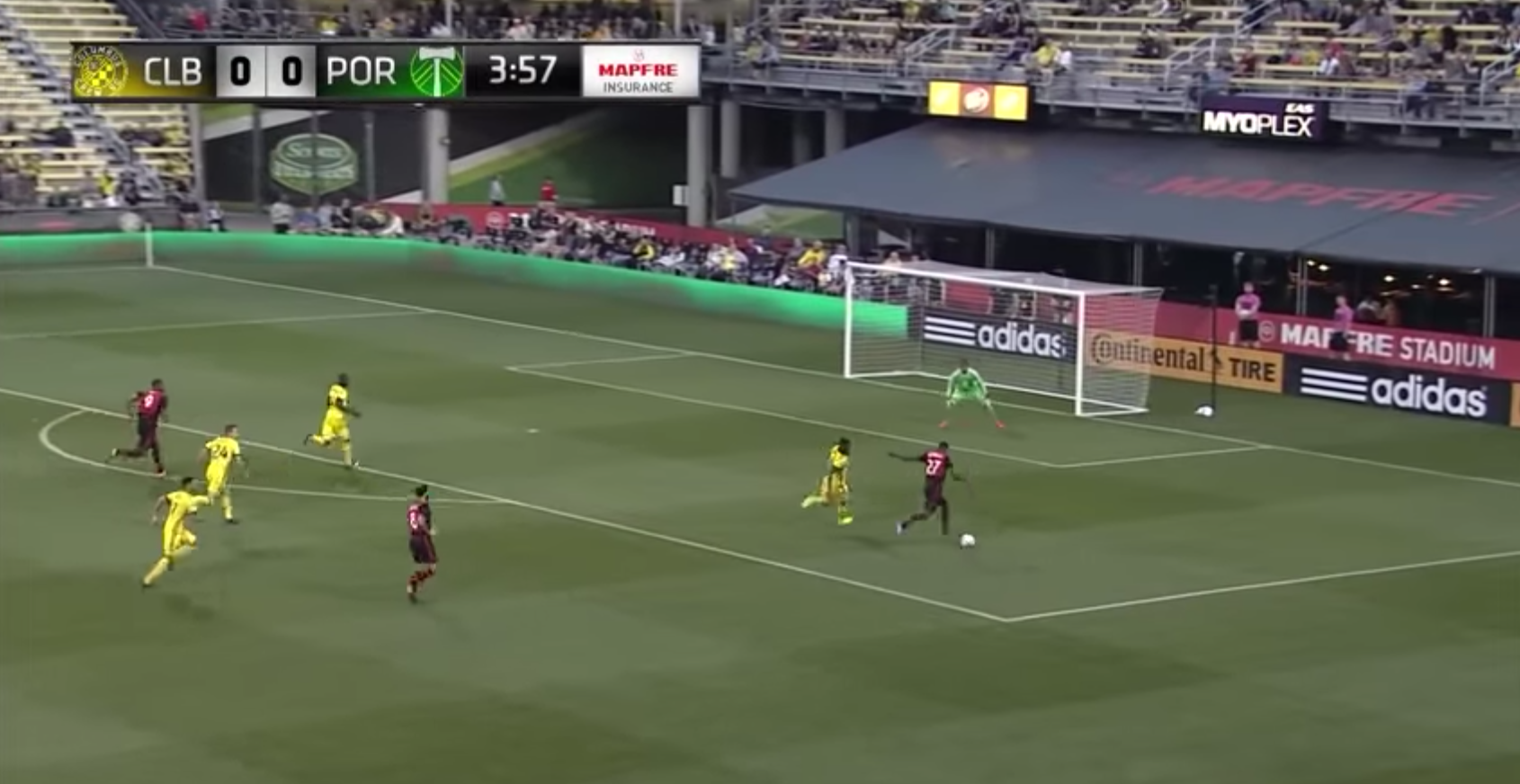
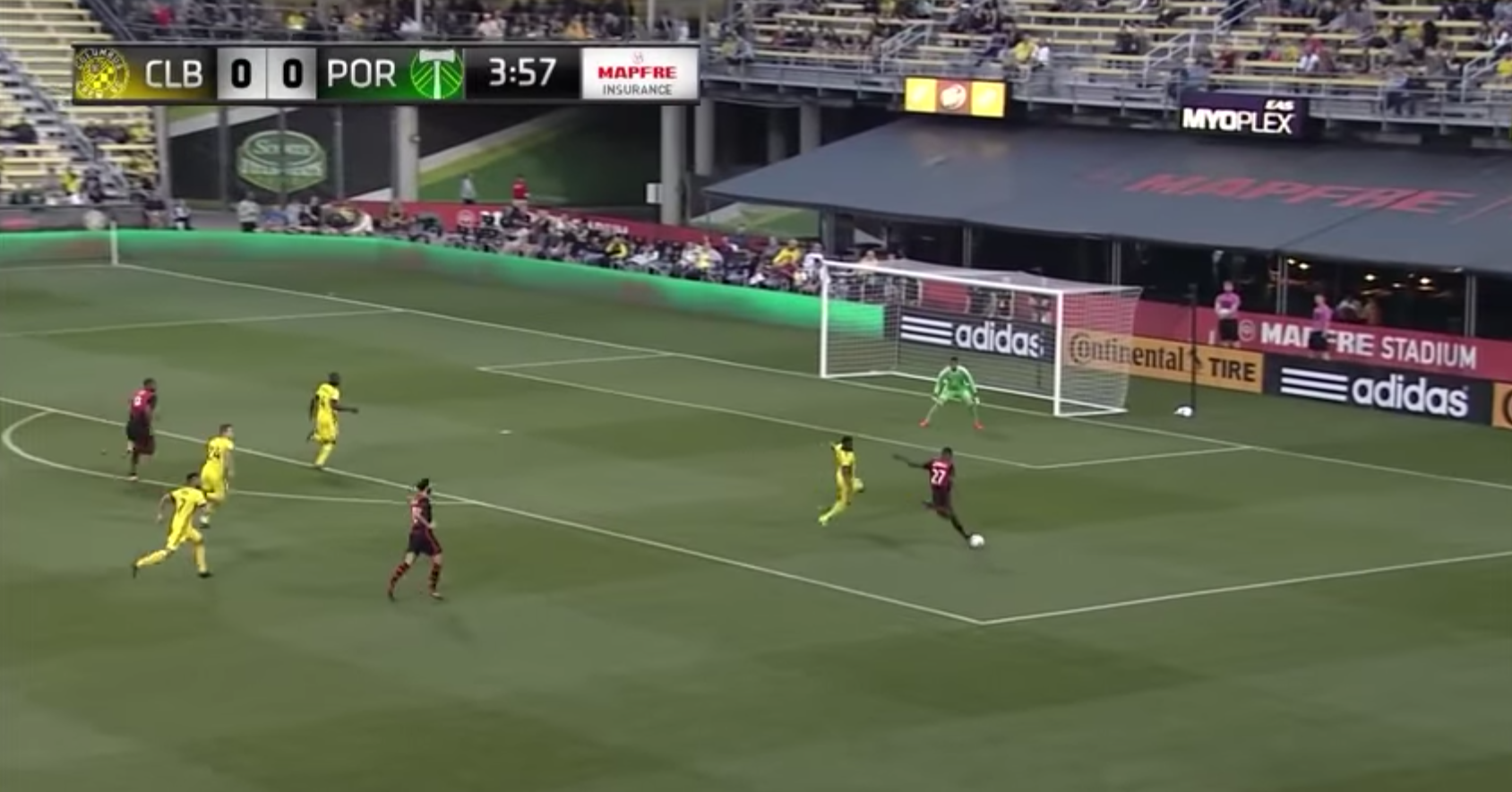
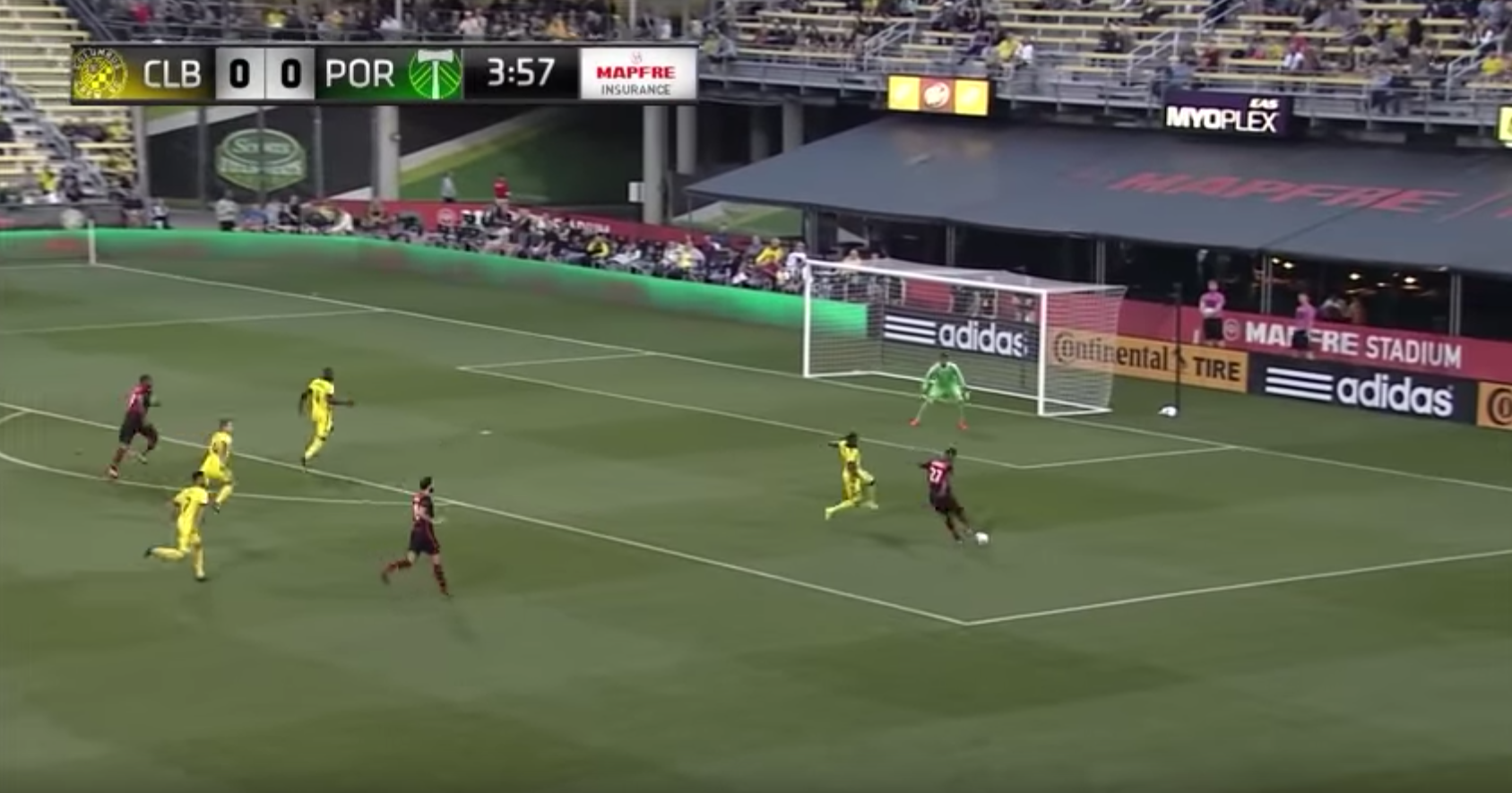
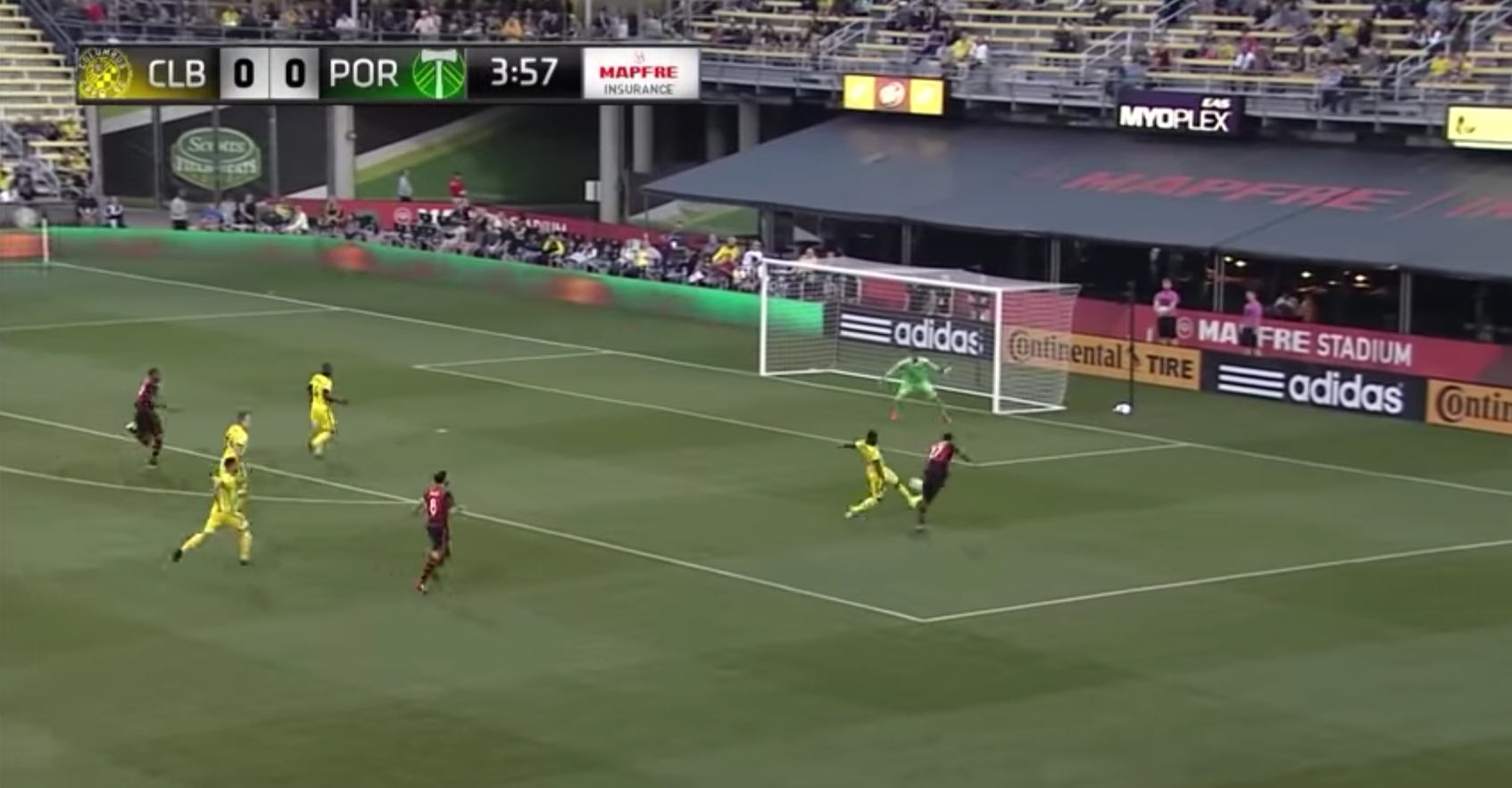
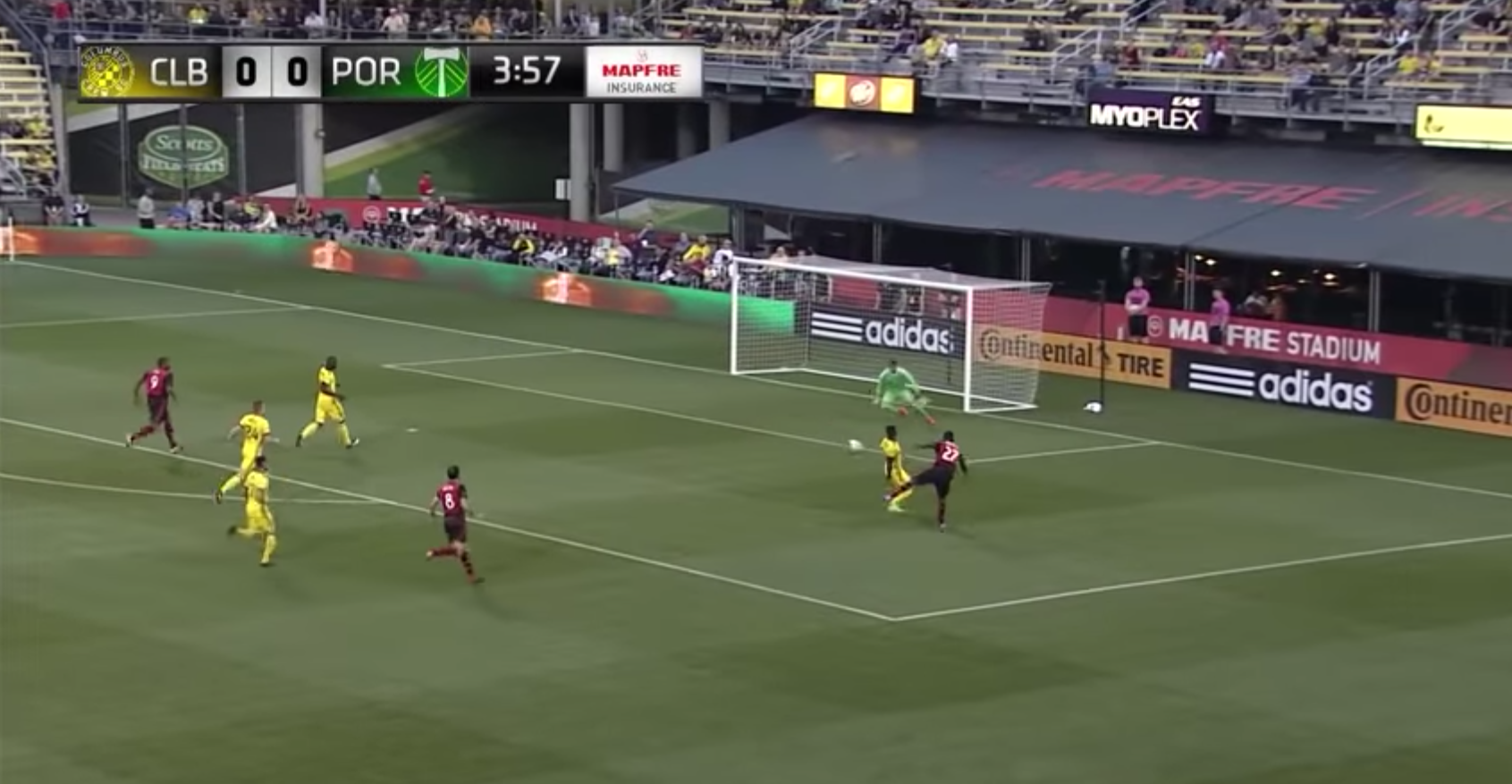
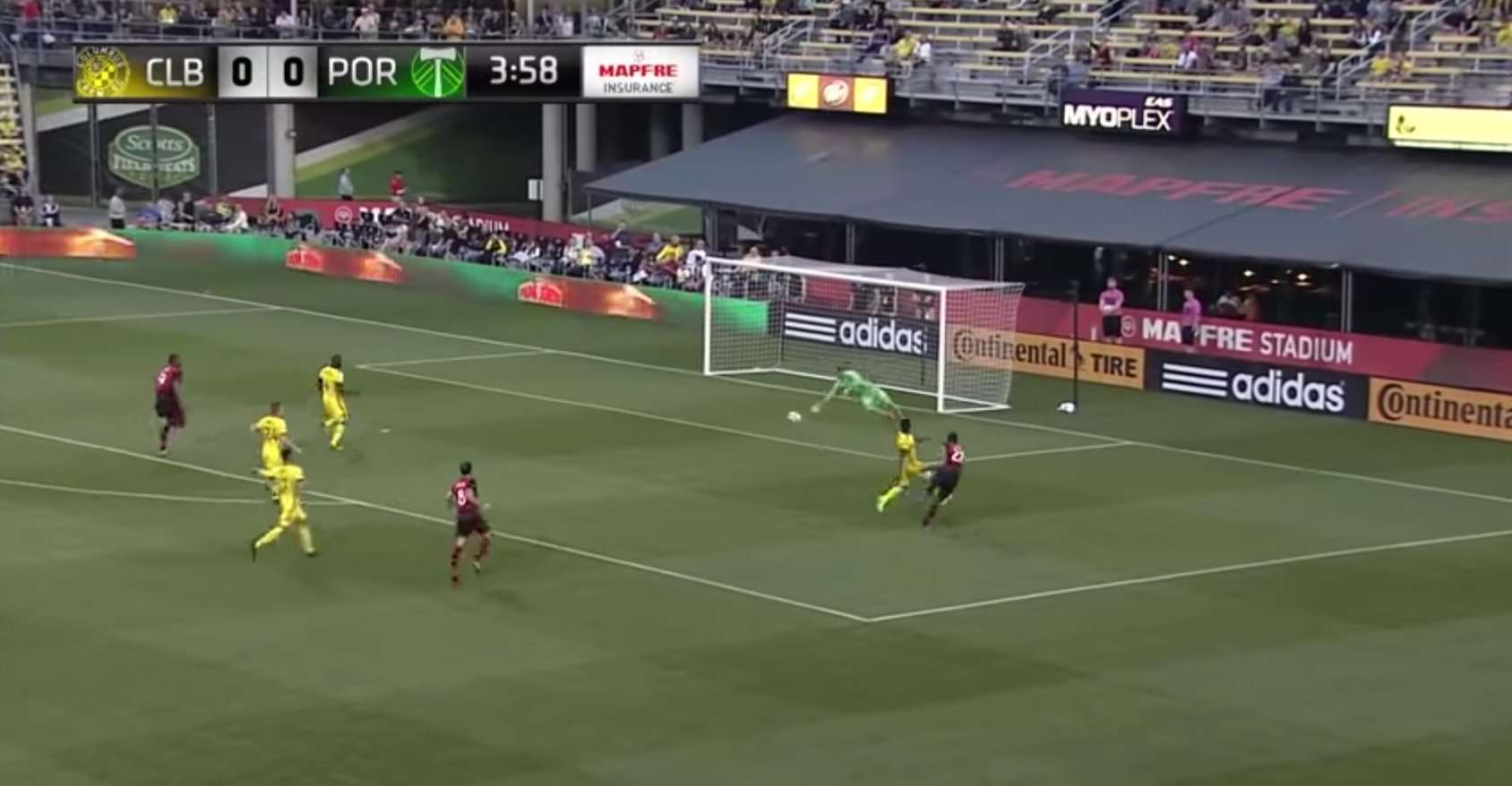
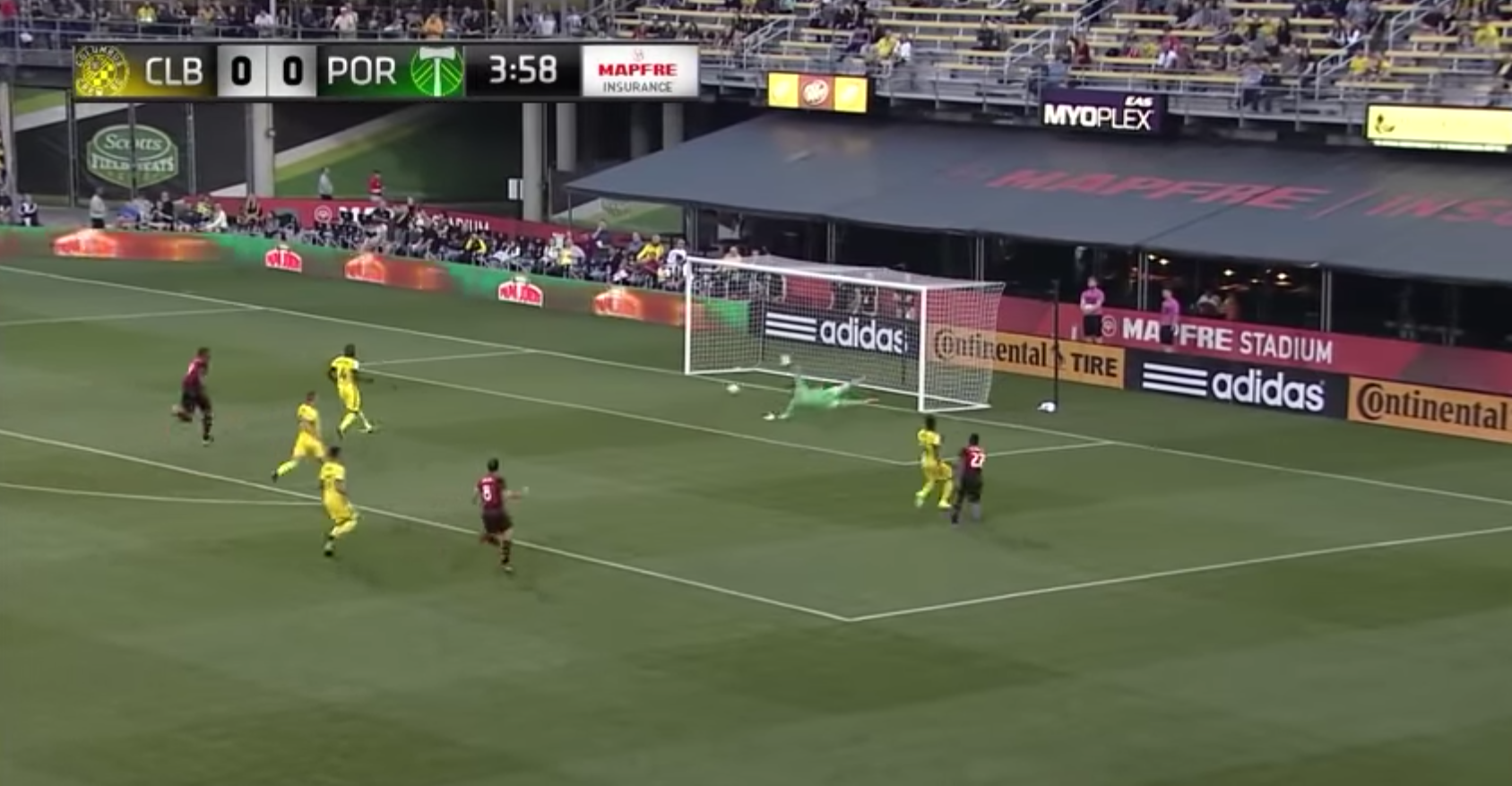
There's a lot of talk about "angle play" and a goalkeeper's arc within goalkeeping circles. 90% of the time, if you can improve your angle to adequately cover both posts, do it. However timing can be more important than angles in certain situations, and Steffen shows us why in the 5th minute. (I took screen shots here so you can notice the footwork a little better.)
As the shot is taken, Steffen is actually improving his angle by continuing to shuffle on his goalkeeper arc. The problem is that the ball is being struck as Steffen is moving, stopping him from getting set in time. The shot is originally one from fifteen or so yards out, but because Steffen is still moving, the shot becomes one from about six yards out. Steffen's timing is so out of sorts that he ends up diving with his left foot on a shot to his right.
In similar fashion to Shuttleworth's situation, Steffen's movement ends up taking him away from the shot. If both goalkeeper can control his momentum and get set earlier, they can make a better play on the shot.
One Man's Land
Play starts at 3:20
Last October, there was a split in the soccer community on Claudio Bravo's poor pass against Barcelona that led to a red card. While people were quick to defend or criticize Bravo's ambitious pass, the problem with the play was idiotic handball. First off, we don't know Suarez's shot is going in. So to risk a red card for a probable, but not definitive, outcome is not playing the odds. Secondly, there's still a lot of time in the game but Manchester City ends up playing down a man for the next forty minutes. It's an unfortunate pass, but the bigger error is the red card. Don't make a bad situation worse.
In the 81st minute, Van Oekel wisely heeds to this line of reasoning and lets Bradley Wright-Phillips stroll pass him to the open net without fouling him. Now, we can all agree that it's a bad play by Van Oekel to run out of the box like that, but at the very least he doesn't make it worse. His defender somehow saves the day but credit to Van Oekel for not doubling down on his mistake and trusting his defender.
Playing Out of the Back With One Foot
Play starts at 1:00
In the first minute Steffen receives a bouncing back pass with an onrushing attacker. Steffen can either play out to his left or simply clear the ball up field. The play to his left would require two touches but he has the time to do so. He could either trap left footed and play with his left, or trap with his right across his body. Both plays require a confident left foot, which ultimately Steffen doesn't have. He takes the safe option and boots it up field.
This specific play is fairly inconsequential but there may be farther reaching implications that we don't see. Defenders might stop opening up, assuming Steffen won't be able to play a certain ball. Midfielders might stop dropping to Steffen and just smash the ball down the line, assuming he will do the same. Opposing strikers might start pushing Steffen to his left foot, causing more errors out of the back. Every team needs a specific goalkeeper, and if Columbus doesn't have one with two feet, it'll be impossible to consistently play out of the back.
Let's Talk It Out
I can't count the amount of times I've heard a young goalkeeper say "I told them but they didn't listen to me!" Despite popular belief, defenders are not robots and can use the information a goalkeeper can offer. In the 10th minute, New England misses one of their twenty opportunities on goal. Shuttleworth is unhappy about the lack of defending so he lets his team know about it. Unfortunately no one is paying attention to him as they all walk away without a glance. For a team that is averaging 4.5 goals conceded per game, it's probably time to look at what is or isn't working.
Even when Alvbage was in goal, you can tell there was a disconnect with him and the defense, which isn't limited to the back line. On crosses, Shuttleworth or Alvbage rarely offer specific mark-ups and both their body languages are completely defeated after every single goal this year. A goalkeeper's non-verbal skills aren't the main reason for an abysmal defense, but they do affect the team. For whoever Minnesota's goalkeeper is going forward, it may come down to grabbing a defender by the collar and giving specific instructions to shore up the defense. Or they can continue yelling vague "come on!"s and see how that works out.



